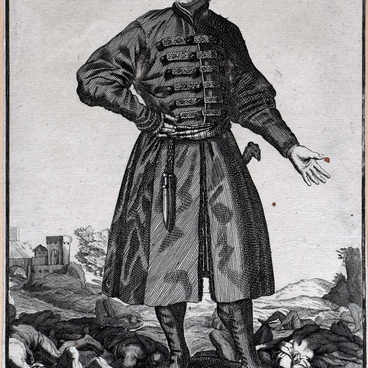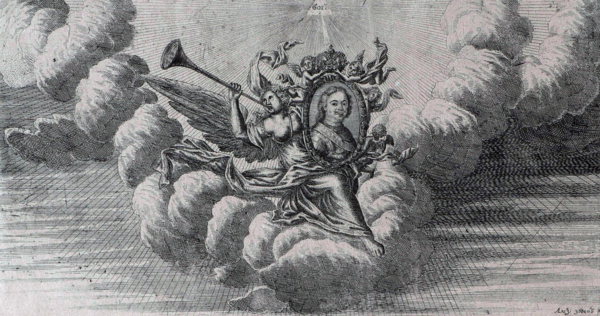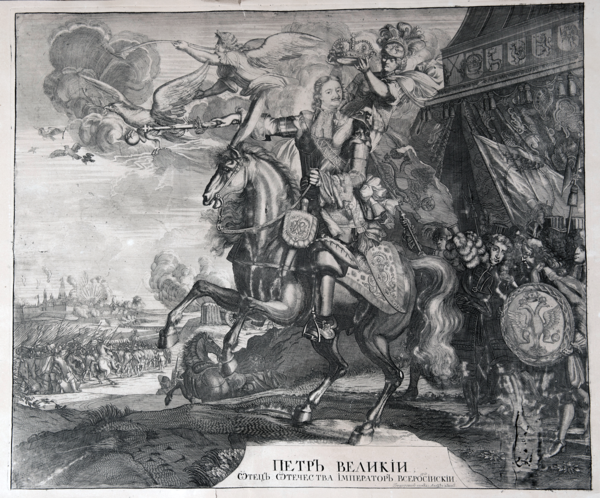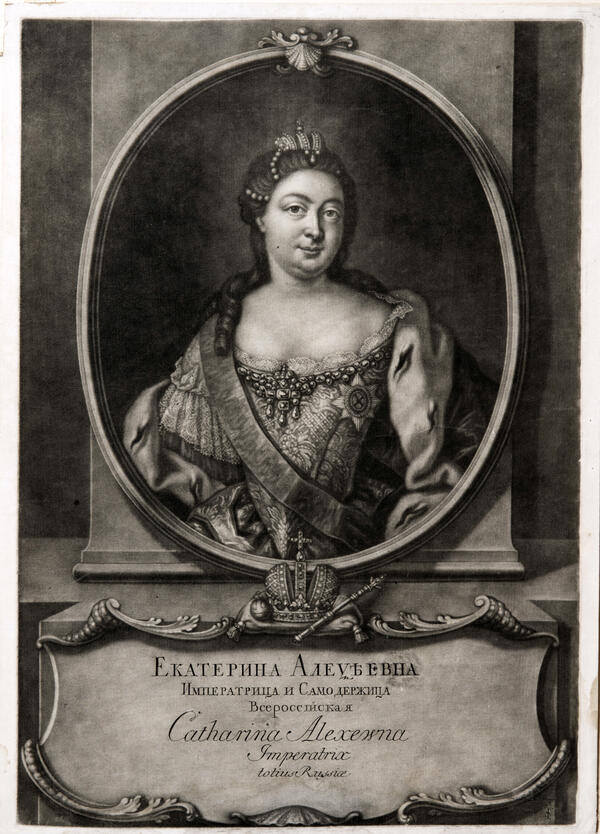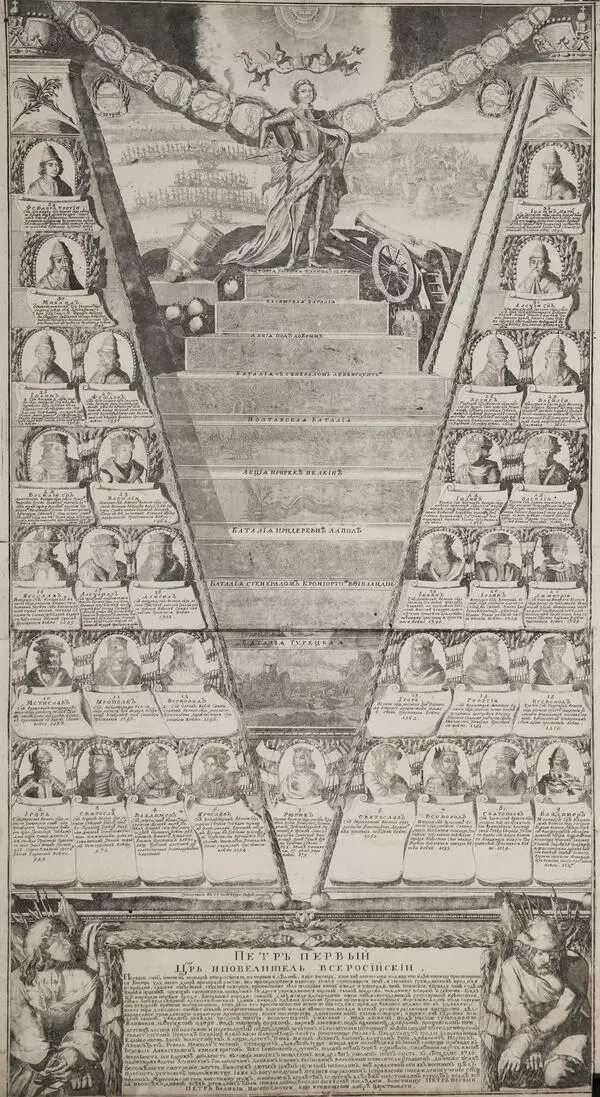In 1712, the wedding of Peter I and Catherine I, nee Marta Skavronskaya, took place in St. Petersburg. The image of this celebration is considered one of the most important and masterful works of the Russian engraver Alexey Zubov.
Zubov used the large oval table as the compositional center of the interior. Its edges, cut off by the frames of the engraving, seemed to push apart the walls, making the hall even more spacious. This allowed Zubov to avoid a forceful, stuffy perspective, as the room is limited only by the ceiling outlined with soft strokes. Subtle transitions of light and shadow in the top part of the sheet create an effect of silvery iridescence.
The engraving was commissioned by Alexander Menshikov, not in the wake of the event but beforehand. Preparing solemn engravings in advance was not uncommon for the Peter the Great era. Such engravings were presented during the celebration. In addition, they often served as a program for the conclusions (a baroque genre of engravings) and fireworks.
Several facts indicate that the “Wedding” engraving was made in advance. Firstly, there is no exact date on the sheet. It should have been written down into the intended field. Secondly, by artistically transforming the space, Zubov managed to fit more than a hundred people in a room with three windows. In fact, according to information from the “Journal of Peter I”, the guests were accommodated in several small rooms on the first and second floors of the palace.
There is a third point that causes debates among researchers.
Alexander Menshikov was appointed the steward, or “marshal”, of the sovereign’s wedding. His name is mentioned in the engraved text and he is depicted standing behind Peter. It is possible that like many other official celebrations, the prince expected the wedding feast to take place in his palace. Seizing the opportunity to demonstrate the rich decorations of his chambers, Menshikov asked to base the interiors of the engraving on them.
It is also possible that Zubov depicted the front hall of the Winter Palace, where the celebration took place. As both palaces were built at the same time and have an identical layout, it is difficult to say which one was actually depicted.
There is no answer to this question. However, the accuracy of the layout was conveyed by Zubov in such detail that architectural historians can use this engraving as a reference on the history of the ceremonial interior of the beginning of the 18th century.


